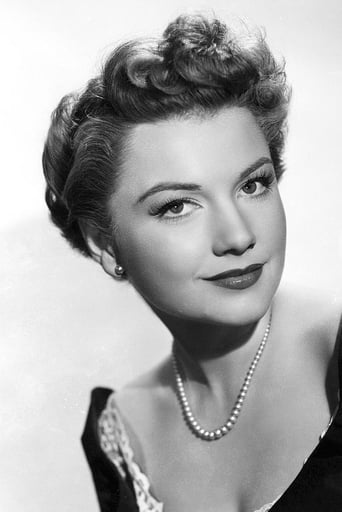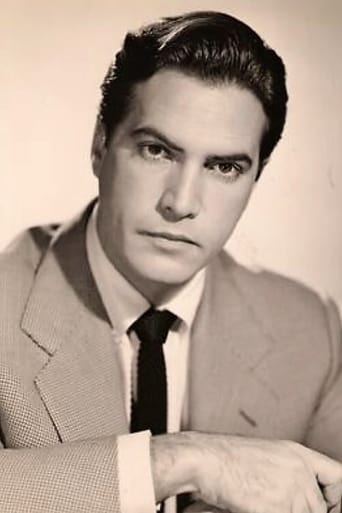ma-cortes
The trespassing whites pass through the reservation and crossing Indian lands . Then , Indians attack a wagon train that is really defended forming an impregnable circle . However , they are strongly attacked and , finally , assaulted and killed . But seven women are the only survivors of the Apache attack on the wagon train . Led by the brave Mary Ann (Anne Baxter) , she is in charge of maintaining order and attempts to keep the peace , spirit and will among them . The survivors undertake a long getaway to get their salvation throughout the dangerous territory . They are the followings : the unsettling Ursula (Maria Perschy) , the Mexican Pilar (Perla Cristal) , Dorothy (María Mahor) , Bridget (Christa Linder) and two circus artists : Katy Grimaldi (Rossella Como) and Betty Grimaldi (Adriana Ambesi) . Soon after , a rebel Indian called Pope (Luis Prendes) wishes wages war Us cavalry and to attack a strongly defended Yankee fort against the peaceful White Cloud (Fernando Hilbeck) who makes up to White Men , but the Big Chief , Red Cloud (Jorge Rigaud) , decides War . As the rebellious and violent Indian White Cloud vowing to lead the tribe in battle against the encroaching white men . Meanwhile , the valiant women must cross the desert on foot to escape the Indians who are hunting them . Later on , they encounter shelter at an Indian cemetery , being helped by another injured survivor , Gus Macintosh (Gustavo Rojo) from Fort Lafayette . This Spaghetti/Chorizo flick gets Western action , shootouts , breathtaking Indian raids on wagons and results to be quite entertaining . The picture contains spectacular charges of Indian riders against Wagon Train and Us soldiers . This moving movie is an epic portrait of the stirring story about some survivors who decide to unite their forces against the successive Indian attacks that are killing them one by one . It's a medium budget film with good actors , technicians , decent production values , acceptable results , and made in colorful as well as American traditional style , though it has a few failures . When there takes place the Indian assault on the wagons , possesses all the sweep , grandeur and noisy action of the greatest Westerns of an age long past . The group of women is played by a plethora of Italian/Spanish actresses and a tarnished American player . Leading the great Anne Baxter who gives an impulsive and enjoyable acting . Support cast is mostly formed by ordinary Spanish actors who performed support actors in the numerous Paella/Pasta Westerns of the 60s and 70s , in fact , the Indians were played by 3 Spaniards : Fernando Hilbeck , Jorge Rigaud and Luis Prendes . This exciting Western was decently photographed in Eastmancolor by Marcello Gatti , a prestigious cameraman who made "The Battle of Algiers" and ¨Queimada¨. Being filmed on location in Ciempozuelos , Madrid , and Desert of Tabernas , Almeria , Andalucia , Spain . Evocative and thrilling musical score by Gregorio Garcia Segura .This ¨The Tall women¨ is also known as ¨Las 7 Magnificas¨ , bit it has nothing to do with ¨The Magnificent seven ¨ by John Sturges . The picture that has a lot of flaws and gaps was professionally directed by Rudolf Zehetgruber , Sidney W. Pink and Gianfranco Parolini or Frank Kramer , though some of them appear to have been credited for purely 'economic' reasons connected with the regulations inherent in the funding of such co-productions . Rudolf Zehetgruber directed various films about the ¨love bug¨ , the WW car who starred several Disney films , such as : "Lovebug on Extra Tour" ,"Return of Superbug" , "Superbug, Super Agent" , "Superbug, the Craziest Car in the World" . Sidney W Pink supervised this co-production , he produced the first widely released feature-length 3-D film, "Bwana Devil," presented in the polarized dual-projector system which became standard for the 1950's 3-D movie craze , this film was shot using two lenses, one for each viewer's eye . He went on to produce "The Angry Red Planet (1959)," in which a development technique was used to cast a pink effect across the film, which he named CineMagic ; Sidney directed other Westerns as ¨Finger of the trigger¨, and ¨Joe Navidad¨ . Furthermore , Gianfranco Parolini credited as director on the Italian release made all kinds of genres , and , usually , incorporating circus acrobatics on the action sequences , getting successes in Spaghettis , such as : ¨Johnny West¨, ¨Sabata¨, ¨Adios Sabata¨ , ¨Texas 1970¨, ¨God's Gun¨ and "Challenge of the Golden Fist" .
MARIO GAUCI
To begin with, this isn't really a Spaghetti Western – even if it's listed on websites devoted to the subgenre; while the American title recalls Raoul Walsh's THE TALL MEN (1955), the original Spanish one – LAS SIETES MAGNIFICAS – would wish to liken the film to THE MAGNIFICENT SEVEN (1960), but such comparisons don't do it any favors at all! Incidentally, I have to wonder what was the purpose of employing three separate directors for it (though billed on the print I watched under one idiotic name, Cehett Grooper) when the result is so thoroughly bland; I presume, however, that each director was basically responsible for supervising the end product on its respective home ground! The plot – seven women, traveling to the West for marriage purposes and the sole survivors of a caravan massacre, have to contend with marauding Apaches during their trek to the nearest Army fort – is somewhat unusual but, as I said, the uninspired treatment lets it down. Casting is below par, too – led by a past-her-prime Anne Baxter, Maria Perschy (initially irritating as she repeatedly breaks into German bemoaning her infant's death) and Gustavo Rojo (belatedly introduced as the would-be hero, since he's incapacitated almost instantly!).Two of the women are Italian acrobat sisters whose exploits are, at one point, incongruously accompanied by a typical circus fanfare; I say this because, for the most part, the film's tone is relatively sober – with a fairly violent opening, a surprisingly gruesome stay at an Indian cemetery, and even having one of the women themselves (who has been abducted by the Apaches) found bloodied and scalped!
frank_olthoff
(Version reviewed is the 100-minute showing on tm3 on June 23, 2001.) Expectations of a spaghetti western will be disappointed: director Rudolf Zehetgruber (aka Cehett Grooper, according to the Italian-language opening credits) helmed a somewhat anachronistic picture in the style of American 50's horse operas as regards story, cinematography and music. Its basic asset is founded on the plot, sending seven w o m e n through an Arizona (or, actually, Southern Spain) desert after having survived an Indian raid. Their adventures on the road are surprisingly exciting enough to keep the spectator awake to the end, although unexpected turning points fail to appear. The seven characters are finely distinguished (down to the costume colors) but lack some convincing sympathy except for Baxter's rôle; best acting, apart from Baxter, is turned in by Maria Perschy (as the Austrian Ursula whose child is killed at the beginning but who regains her strength during the march) and Perla Cristal (as the Spaniard Pilar, the tough "lady in red"). Jorge Rigaud has two cameo-like scenes as a slowly nodding Indian, whereas Gustavo Rojo's strong male lead (appearing as late as 54 minutes into the film) seems rather detrimental to the storyline. There is something (pseudo-)feminist about the story, even more because the crew mainly refrained from presenting hot girls in sweat-soaked blouses as one might have foreseen. (There are, as a matter of fact, some unhistorical decolletés.) Editing of this picture is pretty odd at times. The well-staged action scenes, the one-dimensional portrayal of American natives and a singular pseudo-philosophical dialogue between Baxter and Rojo support the emulation of American 50's westerns. Director Grooper will have been well aware of the fact that he did not create a "Fistful of Dollars" or a "Once Upon a Time...", neither is there a touch of "The Magnificent Seven" as the Spanish title seems to imply. This is an unspectacular, if solid, western with women in the central rôles - an idea that does not change much after all. (German dubbing includes the fine male voices of Rainer Brandt (Rojo), Thomas Danneberg (Hilbeck) and Friedrich Joloff (Clarke).)




